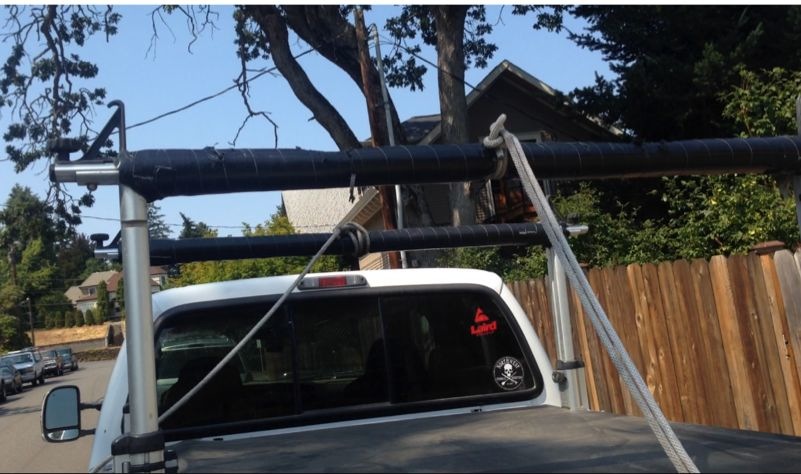A few years ago, after a downwinder on the south side of Maui, Dave Kalama showed me his rope system for tying down boards. He had small boat-mooring cleats attached to his rack to tie the rope off to. I didn’t see the point of his system–why not just use straps? But when my new Bullet 17 nearly blew off my rack in Maliko Gulch I realized that Dave’s permanently attached ropes would secure a board immediately, and could be flipped into place in a second instead of fiddling with straps. I bought some heavy rope, made my own Kalama system, and ever since then I’ve considered straps to be a poor substitute.
I don’t expect people to convert to this approach in any great numbers. It’s one of those ideas that does a slow burn. It offers a lot of advantages and no real downside other than it’s always on your rack. But I find the ropes are handy for tying down all kinds of things.
The big advantages are:
- Quickly secure your board
- Stretchy rope won’t crush your rails
- Tying down accomplished standing on the ground
- Cheap
- Secure
- Fast
- Can be done as a cable lock
- Good for multiple board stacks
Here’s some pictures and a video. My grandson Shea shot the video, and he’s easily distracted, so I apologize for the “Blair Witch” look and feel.
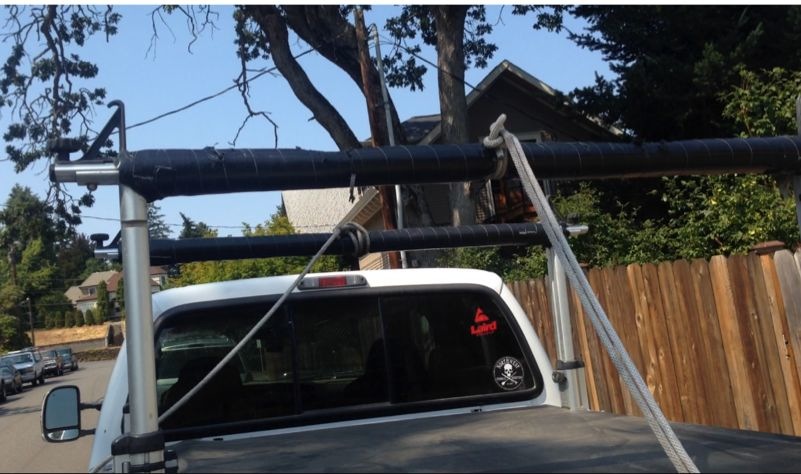
I use moderately heavy rope to make it easy to toss and flip it in the wind. Each end needs to be about ten feet long if you’re going to tie it at the truck bed level. My rack has a handy brace for tying, and I use the race ends to double the rope and take up slack. You don’t need such a long rope if you’re tying at the rack level or you won’t be carrying multiple boards. You can tie it as two separate strands, as I have it on the rear bar or double the rope and loop it over the bar as I have it on the front. I tie a square not over the loop to keep it in place.
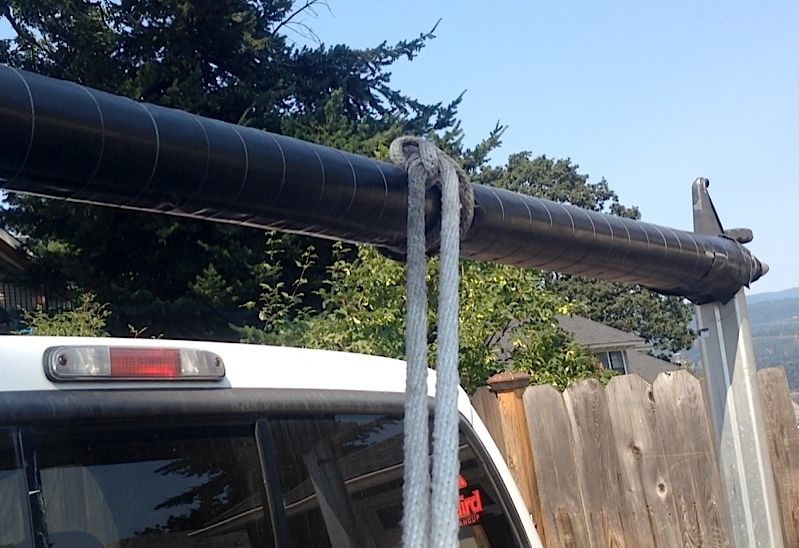
I let the rear set of ropes hang down between the boards I’m loading. The front set I toss to the side I”m NOT loading the first board onto.
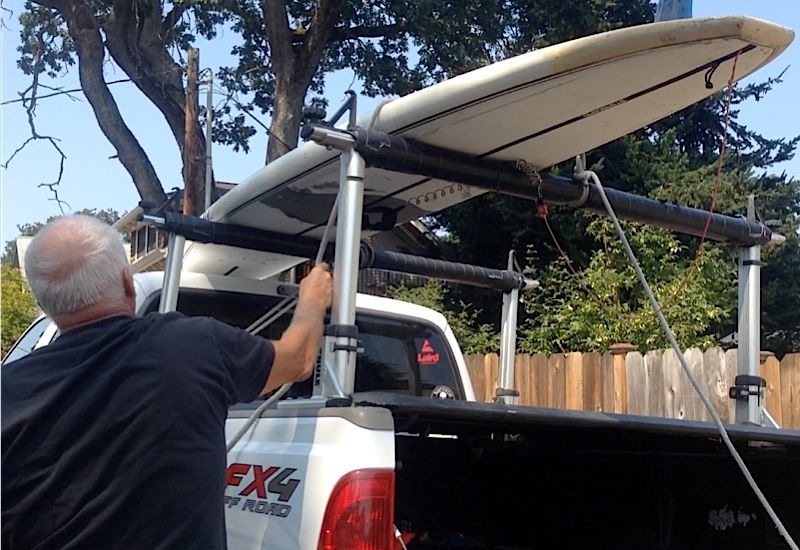
You can load the board by walking it on from the back, and then flip one of the back ropes over the tail to secure the board and keep it from blowing off the rack. Toss the front two ropes over the first board, tie one down. Then Load the second board. Secure it with the back rope. then toss the remaining rope over the front of the board and tie.
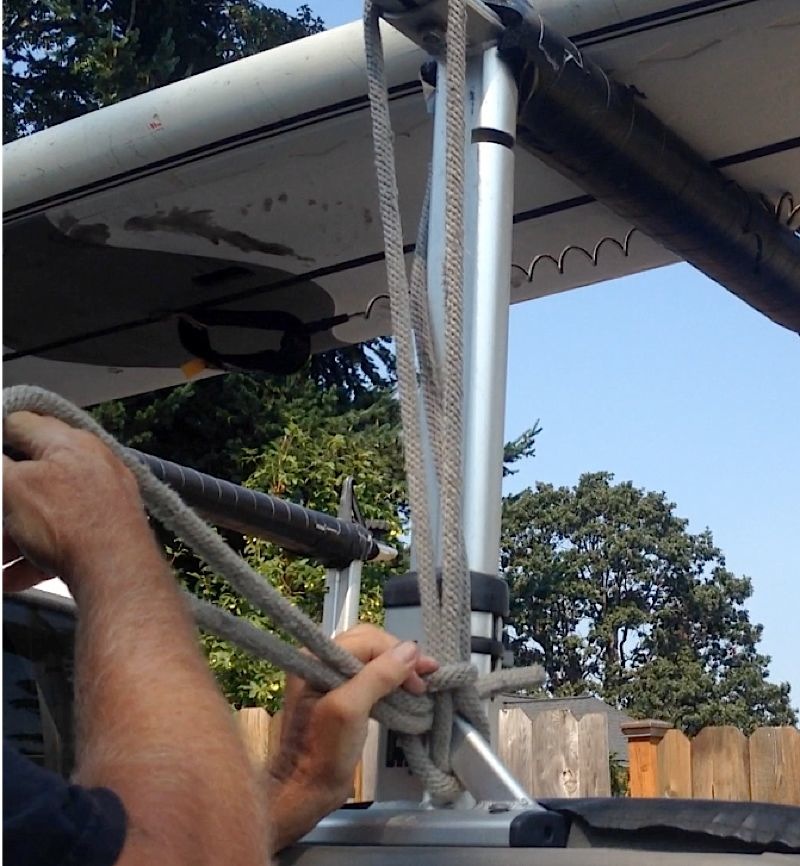
All the loading and tying is done standing on the street. I use two overhand knots made with a loop of the line to take up the remaining slack. You can pull hard on the rope without fear of cracking a rail–the rope stretches to hold the board secure without overloading the rails.
You can also lead all four ropes to the back and just flip them into place on the boards. The only problem with this approach is you have to pay attention to where the ropes lead. It’s easy to tie off a back rope and trap one or both of the front ropes. When I’m not using the ropes I either tie them off in the same manner as carrying a board, or I lead them all to the back over the rear bar and just close them between the tailgate and my cover.

